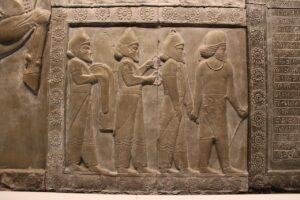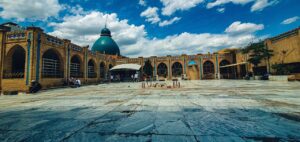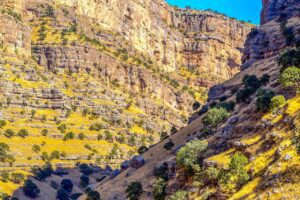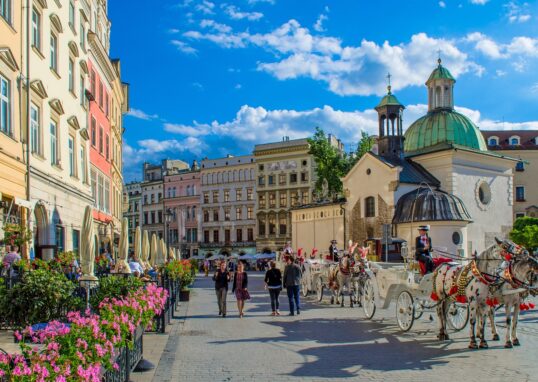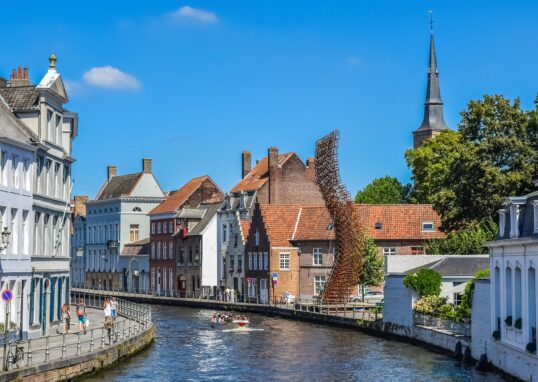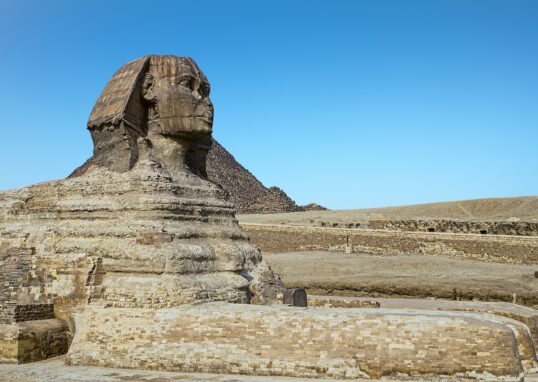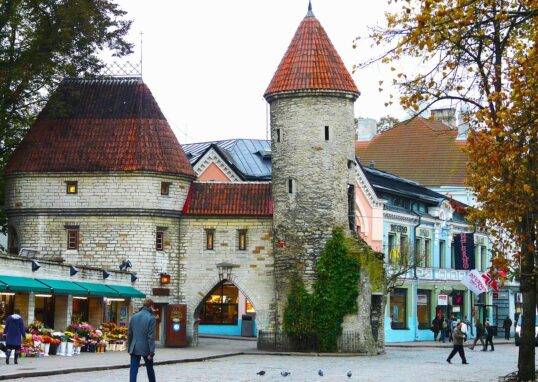
Babylon – The Ancient Wonder of Mesopotamia
Babylon was one of the most famous cities of the ancient world. It was located in Mesopotamia, now the area of Iraq, along the Euphrates River. The city became a beacon of power, culture, and beauty. Babylon dominated politics, trade, and scholarship at the center for some few centuries. It was also famous for its mythological buildings, such as the Hanging Gardens, which proved to be one of the Seven Ancient Wonders of the World. Babylon is not myths and ruins only. It was a city where kings built palaces, armies marched through, and scholars charted the stars. Its name still echoes in history, religion, and culture. In this article, we are going to learn about Babylon in great detail. We will learn about its history, architecture, culture, religion, and significance. Then, we will also learn about the surrounding places that are connected to Babylon’s history.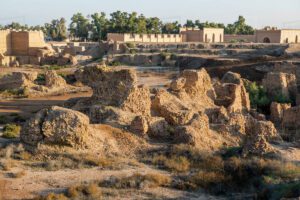
The Origins of Babylon
Babylon’s past stretches thousands of years ago. The city was first settled in the 3rd millennium BCE. Mesopotamia was occupied at that time by small city-states. Babylon was one of them. Babylon grew strong with time. In the 18th century BCE, it was made the capital of the Babylonian Empire by King Hammurabi. Hammurabi is famous for compiling one of the world’s oldest law codes, the Code of Hammurabi. Babylon was located in a very strategic position. It was near the Euphrates River, which provided water, fertile soil, and trade routes. This made Babylon rich and strong.
The Golden Age of Babylon
Babylon prospered under King Nebuchadnezzar II (605–562 BCE). He expanded the city and built most of its largest monuments. Babylon was the world’s largest city during his reign. The city was well-fortified, with magnificent temples and lovely palaces. It became the hub of culture, science, and religion. People flocked to Babylon to trade and learn from many places. Nebuchadnezzar II is also credited with the construction of the Hanging Gardens of Babylon. Although historians still debate whether or not the gardens existed at all, they remain a good symbol of ancient engineering and grandeur.
The Walls of Babylon
Babylon’s walls were among the most extraordinary structures of the ancient world. The historians of the ancient times recorded that they were vast and nearly impenetrable. In some legends, the walls were wide enough on top for chariots to race. The walls protected the city from enemies. They also showed the power of the Babylonians. The gates of the city were beautifully decorated. The most famous gate of the city was the Ishtar Gate.
The Ishtar Gate
One of the most beautiful monuments of Babylon was the Ishtar Gate. Nebuchadnezzar II constructed the gate around 575 BCE. Blue glazed bricks, lions, bulls, and dragons adorned the gate. These animals were representations of gods. The gate led into the Processional Way, a sacred ceremonial road that was lengthy. Portions of the Ishtar Gate remain today in the Pergamon Museum in Berlin. It remains one of the most sacred Mesopotamian artifacts.
The Hanging Gardens of Babylon
The Hanging Gardens are one of the world’s greatest mysteries. They are included among the Seven Wonders of the World. Ancient writers described them as a series of terraces with trees, flowers, and flowing water. It is said that Nebuchadnezzar II built the gardens for his queen, who was homesick for the green hills of her home country. Archaeologists have not found conclusive evidence of the gardens at Babylon, however. It is believed that they might have been built in another city, like Nineveh. In any case, the Hanging Gardens remain a symbol of the loveliness and cleverness of Babylon.
Religion in Babylon
Religion controlled Babylonian life. The Babylonians worshiped a vast number of gods. The chief god of Babylon was Marduk. His temple, the Esagila, was a central religious location. In addition to the temple, there existed a huge ziggurat. Some think that this is where the biblical story of the Tower of Babel originated. The ziggurat was employed to symbolize the connection between heaven and earth. Babylonian priests were powerful. They performed rituals, interpreted omens, and did astrology. Babylon even became famous for astronomy and astrology.
Science and Learning in Babylon
Babylon was not only a city of power but also a city of learning. Babylonian scholars studied mathematics, medicine, and astronomy. They made some of the earliest records of the planets’ and stars’ movement. The Babylonians invented a number system based on 60. That is why we still have 60 seconds in a minute and 360 degrees in a circle. They also recorded significant facts on clay tablets. The majority of these tablets have survived and are interpreted by historians today.
Daily Life in Babylon
Babylonian life was chaotic and diverse. There were workshops, markets, and dwellings in the city. Farmers brought food from rural areas. Foreign goods were sold by merchants. The attire was wool and linen. Both men and women sported jewelry. Games, board games, and telling stories entertained. Babylonian cuisine included bread, dates, meat, fish, and beer. The crops from the Euphrates River valley were plentiful.
Babylon in the Bible
Babylon city appears many times in the Bible. It comes in accounts of the Tower of Babel, Jewish exile, and destruction of Babylon. Babylon in biblical texts sometimes symbolizes pride, sin, and destruction. Babylonian exile was a crucial event. In the 6th century BC, Nebuchadnezzar II defeated Jerusalem and took many Jews into exile at Babylon. The event was deeply impactful to Jewish history and religion.
The Fall of Babylon
No city is forever. Babylon itself came crashing down in the end at the hands of the Persians under Cyrus the Great in 539 BCE. Cyrus itself simply marched in, accounts state, with no great battle. Later, the city dwindled. When Alexander the Great invaded in the 4th century BCE, Babylon was still a force to be reckoned with. But when he passed away in 323 BCE, the city slowly lost its power. Finally, it simply became rubble.
Rediscovery of Babylon
Babylon was almost lost from memory for centuries. Explorers and travelers searched for it. Archaeologists began unearthing its ruins in Iraq in the 19th century. Today, palace ruins, temple ruins, and the reconstructed Ishtar Gate have been seen by visitors. The site is a UNESCO World Heritage Site now.
Surrounding Places of Babylon – The Heart of Mesopotamia
Babylon was not alone in history. It had other great cities and lands surrounding it. Together, these places helped make Mesopotamia one of the world’s first civilizations. To really understand Babylon, we must discover more about these surrounding locations.
Hillah – The Modern Neighbor
Hillah is the closest modern town to ancient Babylon. It is located in the center of Iraq, on the river Euphrates.
- Hillah grew in the period of the Islamic era. It is now a busy city with markets, schools, and homes.
- Many tourists pass through Hillah to visit the Babylon ruins. Hillah is renowned for agriculture as well, due to the fertile soil of the area of the Euphrates.
Importance for Babylon
Hillah is situated on the same land that Babylon once occupied. It is thus a natural guardian of the memory of Babylon.
Baghdad – The Capital of Iraq
- Baghdad is about 85 kilometers north of Babylon. It is the current capital of Iraq. It was founded in 762 CE by the Abbasid Caliph Al-Mansur.
- It was a great storehouse of knowledge during the Islamic Golden Age. Here was the famous House of Wisdom, where scholars translated Babylonian, Greek, and Persian works.
- Baghdad went on and spread the science, mathematics, and astronomy begun by Babylon.
Importance for Babylon
Baghdad perpetuated the Mesopotamian tradition of education. It reflects the continuing impact of Babylonian civilization on later civilizations.
Kish – The Ancient Rival
Kish was one of the earliest cities of Mesopotamia. It lies not far from Babylon, near modern Hillah.
- Kish existed around 3100 BCE. It was a holy city. Many Sumerian kings claimed to rule “by the authority of Kish.”.
- Archaeologists have found temples, palaces, and tombs in Kish. The city was a rival of Babylon in its early days.
Importance for Babylon
Kish shows how Babylon developed from being one of cities to the best of them all. Kish vs. Babylon made early Mesopotamian politics.
Ur – The Sumerian City
Ur is to the south of Babylon, near modern Nasiriyah in Iraq.
- Ur was one of the Sumerian cities. It is most famous for the Ziggurat of Ur, a giant stepped temple that still stands today.
- Ur was an important trade center with links to India and the Persian Gulf. Ur was the birthplace of Abraham, as mentioned in the Bible.
Importance for Babylon
Ur and Babylon were both great religious centers. The ziggurat at Ur had an impact on later temples in Babylon. Association with Abraham also makes Ur and Babylon part of biblical history.
Uruk – The First Great City
Uruk is further south of Babylon. It is among the world’s oldest cities.
- Uruk prospered around 4000 BCE. It is famous as the city of King Gilgamesh, the hero of the Epic of Gilgamesh.
- Uruk boasted gigantic walls, temples, and works of art. Writing appeared for the first time here, in cuneiform script.
Importance for Babylon
Uruk was the beginning of city civilization. Without Uruk’s developments, Babylon would never have become great. Gilgamesh’s stories also influenced Babylonian myths and literature.
Nippur – The Sacred City
Nippur lay southeast of Babylon. Nippur never served as a political capital but remained religious.
- Nippur was owned by the god Enlil, who was one of the elder Sumer gods. Kings of a number of cities wanted legitimacy through controlling Nippur.
- The city boasted magnificent temples and schools. It was a seat of learning and religious authority.
Importance for Babylon
The political capital was Babylon, however, Nippur remained the Mesopotamian religious center. The two cities together represented power and piety.
Nineveh – The Assyrian Rival
Nineveh is situated to the north of modern-day Mosul in Iraq.
- Nineveh was the capital of the Assyrian Empire. It became Babylon’s largest rival in the 8th and 7th centuries BCE.
- Huge palaces and walls existed in the city. King Ashurbanipal built a huge library here, made up of thousands of clay tablets.
Importance for Babylon
Nineveh and Babylon often engaged in wars. But both had science and culture in common. The fall of Nineveh in 612 BCE allowed Babylon to once again become the center of Mesopotamia.
Ctesiphon – A Later Capital
Ctesiphon was built much later after the fall of Babylon. It was located near the site of modern-day Baghdad.
- Ctesiphon was the capital of the Parthian and later Sassanian Empires. It was famous for the Arch of Ctesiphon, a massive vaulted hall. The city was an extension of the Mesopotamian tradition of great capitals.
Importance for Babylon
Ctesiphon shows how the idea of great cities in Mesopotamia continued many years after the decline of Babylon.
The Tigris and Euphrates Rivers
The most important “surrounding places” were not cities but rivers. The Tigris and Euphrates sustained Babylon.
- The Euphrates flowed directly through Babylon. These rivers provided water for farming and drinking.
- They aided the transportation and commerce of cities. Flooding sometimes caused problems, but it also enriched the land.
Importance for Babylon
If the rivers had not existed, there could have never been a Babylon. They were the foundation of Mesopotamian civilization.
The Fertile Crescent
Babylon was situated in the middle of the Fertile Crescent, a broad strip from Mesopotamia to the Mediterranean.
- The Fertile Crescent has been called the “Cradle of Civilization.” It allowed for the emergence of the first cities, writing, and law. Babylon was situated in the center of this region, bridging east and west.
Other Cities and Regions
- Lagash – A second Sumerian city-state renowned for art and law.
- Akkad – Capital of the Akkadian Empire founded by Sargon the Great.
- Susa – It was in close relationship with Babylon in contemporary Iran by trade and war.
- Mari – A palace and record-keeping city along the Euphrates.
All of these cities had an impact on the world around Babylon.
Connection Between Babylon and Surrounding Cities
Babylon was more than a city. It was part of a network system. Trade, war, and culture connected these cities. Commodities such as grain, wool, copper, and gold circulated between them. Ideas regarding law, writing, and religion propagated across Mesopotamia. Babylon drew from the older cities such as Ur and Uruk. It also shaped later centers such as Baghdad and Ctesiphon. Babylon’s history is impossible to narrate without its neighbors. Babylon’s grandeur was not the only one. Surrounding it were cities like Ur, Uruk, Kish, Nippur, and Nineveh. The Tigris and Euphrates rivers watered the land. Later capitals like Baghdad and Ctesiphon continued the legacy. All these places combined to make Mesopotamia the cradle of early civilization. Babylon was the crown jewel, but the cities surrounding it were the building blocks that formed the crown.
The Legacy of Babylon
The legacy of Babylon continues to this day. The city made its mark on law, architecture, religion, and science. Its legends and myths touched cultures around the world. When we are talking about time, astronomy, or even when we use the 60-minute hour, we are connected with Babylon. When we study the Bible, Babylon is symbolic. When we view the old art, Babylon’s gates and temples come to mind. Babylon represents both greatness and fragility. It was a city of wonders, but it also fell to time and conflict.
Conclusion
Babylon was more than just a city. It was a world of culture, science, religion, and beauty. From Hammurabi’s laws to Nebuchadnezzar’s gardens, Babylon left a deep mark on history. Today, ruins, Babylon reminds us of human ingenuity and creativity. The cities, rivers, and lands that surrounded it also played important roles in the history of civilization. Visiting Babylon is like walking through the heart of history. It is a place where the past reminds us of kings, gods, and men who shaped our world.

